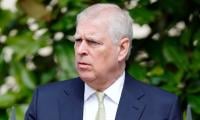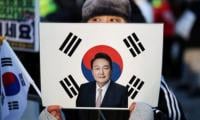US, China reach Phase 1 trade deal
WASHINGTON: The US and China have reached a “very substantial phase one” deal, US President Donald Trump has declared. Tariffs due to take effect on Tuesday have been canceled, and markets responded with elation, international media reported on Saturday.
Phase one of the deal includes intellectual property, financial services, and agricultural purchases, Trump announced on late Friday during a meeting with Chinese vice premier Liu He in the Oval Office, adding the actual agreement may take up to five weeks to write, international media reported. Planned tariff increases from 25 to 30 percent on some $250 billion in Chinese goods due to take effect next week have been delayed.
China has agreed to purchase $40-50 billion (Rs7,800 billion) in agricultural goods, and the countries have reached an agreement on currency issues, Trump declared. Regarding transfer of technology– a particularly sore spot for Washington, which has repeatedly accused Beijing of stealing its intellectual property– the president said the parties had “made progress,” but that most of those issues would be worked out in phase two. Trump praised the Chinese team as “very tough negotiators,” promising the deal would be “great for both countries.” The talks for phase two will begin after the signing of phase one, and there may be a phase three as well. The triumphant announcement followed two days of negotiations in Washington and appears to signal a truce in almost two years long trade war between the two countries.
Markets responded favourably to the news– the Dow was up 319 points by the close of markets and continued to rise afterwards, while the S&P 500 was up 32 points and the Nasdaq gained 106 points. “There was a lot of friction between the US and China. And now it’s a lovefest,” Trump said, calling the deal “a great thing for the world.” Trump said it could take up to five weeks to get a pact written. He acknowledged the agreement could fall apart during that period, though he expressed confidence that it would not. “I think we have a fundamental understanding on the key issues. We’ve gone through a significant amount of paper, but there is more work to do,” US Treasury Secretary Steven Mnuchin said as the two sides gathered with Trump at the White House. “We will not sign an agreement unless we get and can tell the president that this is on paper.” Mnuchin confirmed that the US and China also agreed on transparency in foreign exchange and “almost a complete agreement on financial services.” Washington will evaluate whether to cancel the designation of China as a currency manipulator, he stated.
Trump promised to “have a look” at the trade blacklist in order to determine which companies would be on it. The most prominent member of the list, of course, is Huawei, the Chinese telecom Trump’s government has accused of espionage on behalf of the Chinese government, but Chinese energy firms and technology companies are also on the list. Companies on the “entity list” cannot do business with US companies unless they obtain a rare licence that must be granted by the government.
The two parties also discussed the ongoing protests in Hong Kong, with Trump reporting that his Chinese counterpart believes “things have toned down there” and that “he thinks that’s going to take care of itself.” Asked by a reporter whether he had discussed former vice president Joe Biden with the Chinese, Trump said he had not and that “China can do whatever it wants with Biden.” He did, however, ask “where is Hunter?” in reference to Biden's son– a slogan he told Thursday night’s rally in Minnesota he wanted printed on t-shirts. Trump has accused both Bidens of corruption regarding suspiciously lucrative dealings in China and Ukraine.
Later on Friday, Chinese President Xi Jinping sent an affable message to President Trump, affirming that the talks were “making progress,” and that Beijing had “accelerated purchases of American agricultural products,” including pork and soy beans. “A healthy and steady China-US relationship serves the interest of our two countries and the world at large,” Xi wrote. “Let us work together to manage differences on the basis of mutual respect … so as to bring our relations forward along the right track.”
-
 Prince Harry’s Mental Health Ends Up At Stake As Meghan Moves Him To 'second Fiddle'
Prince Harry’s Mental Health Ends Up At Stake As Meghan Moves Him To 'second Fiddle' -
 Bradley Cooper On Who His Mother Thinks Is The World’s Best Actor
Bradley Cooper On Who His Mother Thinks Is The World’s Best Actor -
 Meghan Markle Offers Glimpse Into Intimate Dance Moment With Harry Amid Split Rumors
Meghan Markle Offers Glimpse Into Intimate Dance Moment With Harry Amid Split Rumors -
 Jon Bon Jovi Joins The Viral 2016 Throwback Trend With Nostalgic Photos
Jon Bon Jovi Joins The Viral 2016 Throwback Trend With Nostalgic Photos -
 Kate Middleton Hailed For Her Lack Of ‘obligation’ As Well As Altruistic, Selfless Qualities
Kate Middleton Hailed For Her Lack Of ‘obligation’ As Well As Altruistic, Selfless Qualities -
 Jason Momoa Says Being With Beau Adria Arjona Feels 'perfect'
Jason Momoa Says Being With Beau Adria Arjona Feels 'perfect' -
 Idris Elba Says One Mix-up Nearly Cost Him A Knighthood From King Charles
Idris Elba Says One Mix-up Nearly Cost Him A Knighthood From King Charles -
 Andrew Mountbatten Windsor Incurs Anger Of Biggest Royal
Andrew Mountbatten Windsor Incurs Anger Of Biggest Royal -
 Megan Fox, Machine Gun Kelly's Relationship 'is Just About Co-parenting'
Megan Fox, Machine Gun Kelly's Relationship 'is Just About Co-parenting' -
 Prince Harry, Meghan Markle Warned They Can’t Fool Brits Because It Won’t Land
Prince Harry, Meghan Markle Warned They Can’t Fool Brits Because It Won’t Land -
 South Korea’s Ex-president Yoon Suk Yeol, Sentenced To 5 Years In Prison: Key Details Explained
South Korea’s Ex-president Yoon Suk Yeol, Sentenced To 5 Years In Prison: Key Details Explained -
 Princess Beatrice Is ‘terrified’ Of Mom Fergie: ‘She’s Begging Her To Not Destroy Her Future’
Princess Beatrice Is ‘terrified’ Of Mom Fergie: ‘She’s Begging Her To Not Destroy Her Future’ -
 Harry Styles’ New Album Earns Subtle Nod From Zoe Kravitz’s Dad
Harry Styles’ New Album Earns Subtle Nod From Zoe Kravitz’s Dad -
 Ari Emanuel Makes A Decision Regarding His Memoir Alongside Prince Harry’s Ghostwriter
Ari Emanuel Makes A Decision Regarding His Memoir Alongside Prince Harry’s Ghostwriter -
 Buckingham Palace Gives The Spotlight To The Duke And Duchess Of Edinburgh: Video
Buckingham Palace Gives The Spotlight To The Duke And Duchess Of Edinburgh: Video -
 Eva Mendes Revisits Year She Hid Pregnancy
Eva Mendes Revisits Year She Hid Pregnancy



